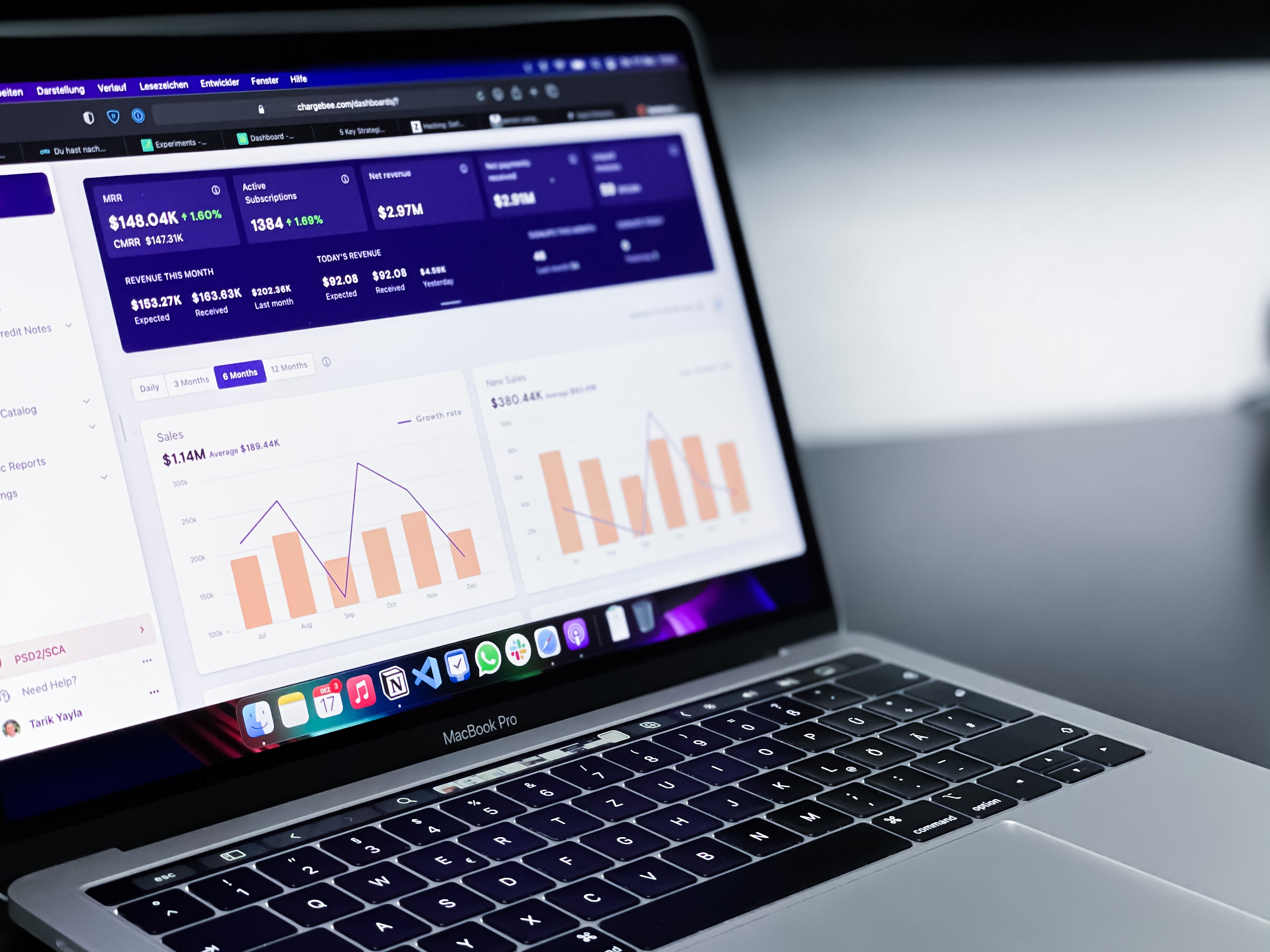Image Meta Tags Explained - Beginner to Expert Guide
They say a picture is worth a thousand words, but what about the information hidden within a...
What do brands like Airbnb, Patagonia, and Spotify have in common? They know how to create content that resonates with their audience, boosts engagement, and most importantly, generates consistent conversions. Read on to find out how they do this (spoiler: it’s all about data analysis!) and how you can do the same to improve your content strategy in this guest post by DAM provider Wedia.
Before we look at some of the ways brands use analytics to measure content performance, first let’s look at why data analysis is so important.
Despite the dearth of content we engage with on a daily basis as consumers, many businesses still struggle to grasp the importance of a content strategy. That doesn’t mean the content isn’t being created—it is, but it’s being created without purpose or proper understanding of how it should support wider business objectives. This is a major competitive disadvantage.
More than 78% of brands that were successful with content in 2021 have a documented content marketing strategy. 73%t of them spent 10-70% of their total marketing budget on content marketing. The takeaway is clear if you compare that to the 53% of companies that spent less than 5% of their marketing budget on content marketing and didn’t succeed with content. If you’re going to create content, don’t do it without a strategy in place first.
And where does every successful content strategy start?
Data.
No matter what size brand you are or which industry you’re in, analytics should be the fuel that drives your marketing engine. By using this data to inform every decision, you’ll be able to create content that resonates with your audience and generates more conversions for your business.
Let’s look at some of the most effective ways to use analytics to inform your content strategy and which channels to focus on.

Any channel that you’re using to distribute content should be analyzed. That could be a combination of social media, website, email, podcast, and search. And with 92% of brands leveraging more than one channel and 81% leveraging more than three, you are probably using an omnichannel marketing strategy. According to Neil Patel, doing this is, “the only way to stay competitive.”
This is why analytics are so important.
To successfully manage multiple channels and maintain a consistent (and large) output of content across all of them, brands can’t afford to waste resources on guessing what may or may not resonate with their audience. Analytics prevent this by allowing brands to optimize and repurpose specific pieces of content. And it’s content repurposing—doing more of what’s working— that gets the highest possible ROI from existing content. It boosts SEO and increases your authority (because multiple pieces of content center around the same topic), helps reach a wider audience, drives more traffic to your website, and strengthens the overall brand. Consistent content regularly reminds people about your business and the products and services you offer.
Keyword research not only helps brands write more interesting content, it also maximizes their chances of performing well in search results. According to SEO software provider Ahrefs, more than 53% of all website traffic comes from organic search. The best way to ensure your SEO is set up to capture that traffic is to write about topics that your ideal customer is searching for. You can use tools like Ubersuggest, SEMResh, or Ahrefs to provide this data, then pick out keywords that are relevant to your site and create the content.
Another way to ensure your website resonates with your audience is to update outdated content. It’s important to do this regularly to enhance the user experience (broken links or irrelevant content will result in bounces), maintain a consistent ranking and continue to provide the most valuable content possible to your audience. After all, an article written three years ago (pre-Covid) will undoubtedly need a big refresh to ensure it’s relevant to a reader today.
To identify content that needs updating, use Google Analytics to see the decline in clicks from organic search. Limit Acquisition channels to ‘Organic search’, click through to the ‘Landing Pages’ tab, and use the ‘Compare checkbox when selecting dates’. Search Console is another tool you can use to identify which pages are losing traffic.
When updating content, be sure to include fresh stats, newer videos/images, internal links to more recent content, new CTAs, and replace broken links. If you’re producing a lot of content, make this process a regular part of your routine. This will ensure you create content that resonates with your audience and attracts higher click-through rates.
And let’s not forget about optimizing images in your content for SEO. Getting metadata and file naming consistently right will enable search engines to crawl and index your images efficiently and automatically renaming files and adding alt text with carefully curated data, it’s also important to ensure a pixel-perfect version of every image, whatever the viewport size or resolution. Technology like Digital Asset Management can support your image SEO strategy by helping brands can guarantee optimal loading speeds and also save a tremendous amount of time renaming all file outputs.

Social media analytics are key to creating content that actually resonates with your audience. Even better if you can add a competitive context to these insights to see how you compare to rivals in your industry — but more on that in a moment.
First, let’s address why analytics are the lifeblood of engaging social media content. Tracking the performance of social media content on a granular level gives brands a competitive edge. And we’re not talking about monitoring vanity metrics such as likes and followers. We’re talking about saves, comments, shares, website taps, reach, engagement rate, and engagement rate on reach (what is that, you ask?!). The ‘active’ signals of engagement that prove a piece of content has really resonated with someone.
With these insights, you can craft a personalized customer experience. It stops you from making assumptions about what your followers want and allows you to deliver them valuable, inspiring, and/or entertaining content they actually want.
British fitness and apparel retailer, Gymshark, used social media analytics to improve engagement rates on their Instagram posts by more than 30%. The reports they set up inside their social media scheduler allowed them to track performance and optimize content without having to spend hours on data analysis. They’re also able to keep track of influencers and user-generated content, which they repost from time to time to keep followers engaged.
Another huge advantage that certain social media analytics tools offer brands is competitor analysis. This gives them a clear understanding of how competitors’ content (media and hashtags) is performing — of what’s working and what isn’t across the industry — without having to go through the pain of testing everything themselves first.
Last but not least, brands can use social media analytics tools to better connect to their audience through social listening or sentiment analysis. By adding in relevant keywords like company and/or product name, you can collect and analyze posts people share about your brand to understand how they feel about it.
If you notice any negative comments, you can address these before reputational damage is done. This is how sentiment analysis enables brands to tweak their messaging, content, and products to ensure it resonates with their audience.
As many brands wake up to the power of email marketing, they are presented with another content stream that requires regular analysis. The specific metrics to measure to ensure email content resonates with your audience are open rate, click-through rate, and conversion rates. By better understanding these, marketers can start to predict the types of emails that trigger audiences to take action.
The industry average email open rate is 21.5% and the click-through rate is 2.3%. The unsubscribe rate is 0.1%. If your analytics are a little more disappointing than those, it might be worth reviewing your emails to ensure you’re not making these common mistakes:
Poor subject lines
This is the most fundamental part of an email and is worth A/B testing to give your content the best chance of getting read. It must be short and engaging — and don’t forget the ‘preview text’! Most brands do, wasting another opportunity to capture their audience’s attention and encourage them to open the email.
Don’t send one generic email to every subscriber. Segment your email list so that specific audiences receive tailored content that resonates with them. This will vastly improve your email open and engagement rates.
Aim to have one (two maximum) clear call-to-action in every email. This will prevent confusion and ensure your goals are met — whether that’s generating replies or click-throughs to a specific landing page.
Your email subscribers are arguably more important than your social media followers because they’ve given you a precious asset — their email address. If you want to hold onto that asset, make sure your emails offer exclusive content that cannot be found on social media. And make 80% of the content inspiring, helpful, or entertaining and 20% promotional. If you only use your email list as a place to promote, you’ll soon see subscribers dropping off.
For bigger brands managing hundreds of thousands of media assets, robust analytics are essential to measuring their effectiveness. Without them, poor-performing content can get overlooked or important information missed. This is more likely for brands whose content data is siloed across multiple teams and platforms.
The solution to this is a holistic platform that measures content across every touchpoint, like Wedia’s digital asset management (DAM) solution. With Wedia, brands can see which content format (packshot versus lifestyle image) performs best on which channel (website, eCommerce, or social media), on which device (mobile versus desktop), and in which country (France versus Spain). It can even merge customer journey engagement data, like the number of clicks, views, conversions, etc. with asset metadata, - media type, format, color, etc. - to help clients understand which marketing and brand content resonates better with a certain audience.
Brands can also compare content performance over different periods and in different markets. Here are just some of the analytics that brands can monitor inside an enterprise DAM solution capable of dynamic media delivery:
All of this information can be organized into custom dashboards, empowering marketing teams to identify the best-performing content, measure engagement throughout the customer journey, and deliver content that resonates with the right audience.
Data-driven content marketing must be a priority if brands are to succeed in 2023. Not only will analytics help brands better understand their target audience, it’ll save them a lot of time and resources guessing why content does or doesn’t work.
They say a picture is worth a thousand words, but what about the information hidden within a...
As the old saying goes, you can’t sell what you can’t see. Maybe that’s not an old saying, but it’s...
Want to get notified when we have fresh, new content ready for you?
Become a member of our community - it's free and you can unsubscribe anytime you want.
By signing up, you agree to receive emails from Creative Force and Creative Operations.